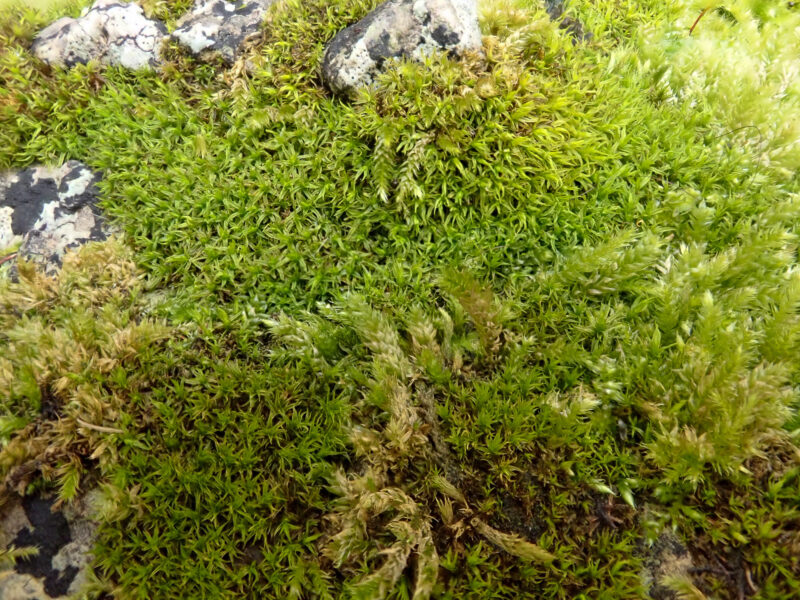Identification notes
In the south of Britain, this is a familiar, ubiquitous moss of sheltered calcareous stones, walls, paving slabs and mortar, or of gravestones in churchyards. Tree roots are another favourite habitat. In northern Britain, however, it is uncommon, and rare in Scotland. Here, in such habitats, you need to check that you have not found Tortella tortuosa instead, an easy mistake for the casual observer from the south, used to seeing the Didymodon so regularly – check for the colourless cells forming a V-shaped patch at the base of the leaves in the Tortella.
The notable feature of D. sinuosus is, as the name implies, the sinuose leaf margin. Individual plants are up to 2cm tall, forming tufts or patches. The leaves are about 2.5mm long, dark green, narrow, with plane, markedly notched margins and often with deciduous leaf tips. It is usually a pretty easy plant to recognize in the field, but not always – immature or stunted material can lack the sinuose margins and caducous leaf tips and can be very puzzling, requiring careful microscopic examination. A useful pointer is that, especially in younger leaves, the leaf tip is often slightly denticulate. There is no harm in taking back what you think might just be small forms of D. sinuosus anyway, as they may surprise you and turn out to be rarer plants of similar habitat, such as Leptobarbula berica. Caution and thoroughness are always rewarded in the world of Bryology.
Read the Field Guide account











